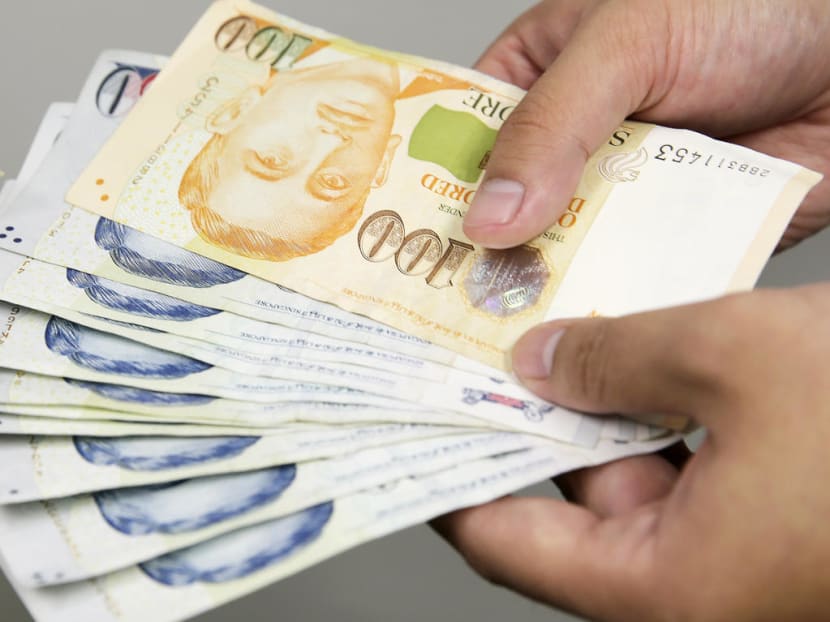Covid-19: Singdollar hits 3-year low against US dollar, weakens against regional currencies
SINGAPORE — The Singapore dollar has slumped to a three-year low against the United States dollar, and is weakening against regional currencies, in a trend analysts attribute to the impact of the Covid-19 outbreak on the Republic’s open economy with its strong ties to China.

Singaporeans were paying S$1.40 for US$1 on Feb 21, 2020. Just a month ago, the greenback cost considerably less, at S$1.35.
SINGAPORE — The Singapore dollar has slumped to a three-year low against the United States dollar, and is weakening against regional currencies, in a trend analysts attribute to the impact of Covid-19 on the Republic’s open economy with its strong ties to China.
The Singdollar sank to S$1.40 to the greenback on Friday (Feb 21). Just a month ago, the US unit was significantly cheaper for Singaporeans at S$1.35. The Singdollar last touched S$1.40 in February 2017.
Some analysts believe the Singdollar could slide further, perhaps to S$1.43 as the Covid-19 outbreak continues to take a toll on the economy.
The slide makes life more expensive for Singaporeans visiting the US, or students studying there — but exports from Singapore to the US are cheaper.
The Singdollar has also weakened somewhat against regional currencies such as the Malaysian ringgit. One Singdollar was buying RM2.99 on Friday, whereas it fetched RM3.02 a month ago.
Analysts interviewed by TODAY said one clear reason for the plunge in the Singdollar is the ongoing Covid-19 outbreak as the Republic’s trade-dependent, open economy and strong links to China meant it had been hit harder than its regional neighbours.
Singapore has also seen the highest number of confirmed cases of the virus outside of China, rendering it the most vulnerable relative to other South-east Asian nations, they added.
Exacerbating the issue are the recent travel restrictions that have been imposed by the Singapore authorities, said Ms Jingyi Pan, who is a market strategist at IG Singapore.
“The move to implement the travel ban, while a necessary short-pain, may also be a hit to the relatively resilient service sector which dampens the near-term growth outlook,” she said.
However, market analysts also told TODAY that apart from the coronavirus outbreak, there are other factors at play here as well.
For one thing, the Monetary Authority of Singapore (MAS) had signalled earlier this month there is room for Singdollar to ease to counter the economic slowdown, though it will continue to maintain its monetary policy for the time being.
Separately, the US dollar, being a “safe haven currency” amid the outbreak, has led to it being stronger than expected in recent weeks, said Mr Saktiandi Supaat, who is the executive vice-president and head of the FX research team at Maybank.
Looking ahead, Mr Saktiandi said that there is a possibility that the Singdollar will continue to weaken against the US dollar and move beyond the current three-year low.
Agreeing, Ms Pan said the Singdollar could continue to weaken towards S$1.43 to the greenback.
“Though this would have to take a continued deterioration of the coronavirus situation with corresponding implications for the Singapore economy,” she said.
On the regional front, Mr Saktiandi anticipates that things will start to stabilise between the Singdollar and the Malaysian ringgit as existing signs point towards the ringgit weakening as well.
“Eventually I think the other countries’ currencies will catch up in terms of weakening. It’s inevitable that the Singdollar has weakened, but my view is that it has overshot. Other currencies will eventually catch up,” he said.
In the long run, however, analysts said the situation remains unclear as it is still uncertain how long the Covid-19 outbreak will last.
One possibility is that the Singdollar will continue to weaken as the MAS’ comments have led some analysts, such as Oanda senior market analyst Jefferey Halley, to expect that the authority will ease its monetary policy in April.
That being said, the analysts also expect that once the outbreak passes and the economy picks up again, the Singdollar will strengthen and recover quite quickly compared to its neighbours, as it did in the wake of the severe acute respiratory syndrome (Sars) outbreak in 2003.
“Usually when things start to stabilise, the (Singdollar’s) recovery is quite V-shaped. So the Singdollar appreciates quite sharply whereas the rest takes a bit of time to recover because of our very open nature,” said Mr Saktiandi.











